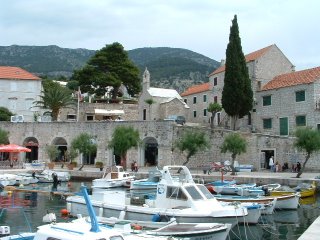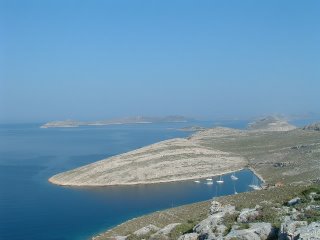Friday Column - Croatia, The Week In Review 6

I hope you’ve enjoyed this week’s postings which have covered the usual broad range of subjects. Sibenik was the topic of Monday’s destination column, a fascinating city which is often overlooked by tourists. We looked at Croatia’s boat shows in Tuesday’s tourism column, specifically the Croatia Boat Show in Split which starts this Saturday. Wednesday’s business column was dedicated to Croatia’s Hotel industry – on the brink of some dynamic growth if it can adapt to Croatia’s new position at the forefront of European tourism and the government can make life a little easier by removing some red tape. Finally this week, Thursday’s lifestyle column looked at driving in Croatia. This is one of my few bête noirs about living in Croatia and I make no apologies for a slightly personalised view though I did try to be as objective as I could!
Croatia Online will be spending most of next week at the Split Boat Show and we’ll be reporting on the highlights as a change from our standard format postings.
Finally, a reminder that Time Out Publications will be launching their first Croatian products this year – a Guide Book, a Magazine for Visitors and a web-site. We’re very happy to be working with Time Out in a number of areas and are certain that the arrival of such a reputable international name on the Croatian travel and entertainment scene marks a quantum leap in the growth and stature of Croatia’s tourism industry.
News and Views
1. Eurovision Song Contest
Not such a frivolous leader as it might seem, but rather an illustration of the problems that still exist in resolving territorial and political divides in the region. As most of you will know, Serbia and Montenegro are one political nation but Montenegro would like independence from Serbia. The two regions could not agree on which song should represent them in the Eurovision Sing Contest, with various allegations of skulduggery being levelled by both sides. Serbia and Montenegro therefore withdrew from the contest, leaving Croatia to fill the vacant place. Unusually, and perhaps equally controversial, it is rumoured that Serbia and Montenegro will still vote in the contest. What are the odds on Croatia getting any of their votes? For more background to the politics of Serbia and Montenegro, click on http://www.oikotimes.com/site/index.php?id=118. For the full and intriguing story on the Eurovision Song Contest withdrawal, click on http://www.oikotimes.com/site/index.php?id=4407. Both these pages are part of a very comprehensive Eurovision Song Contest web site which was featured in News and Review 2 posted on Thursday February 9th.
2. Property Prices
Croatia Today surprisingly reported a decline in Croatian property prices in 2005 although there was an increase in volume resulting in an overall growth in the market of 16.4%. The report suggests that sellers expectations are well over the prices actually achieved and there is much recent anecdotal evidence to suggest that sellers are being more realistic in setting prices. Hopefully that means the property market will settle down a little in 2006. Go to http://www.reporter.gr/fulltext_eng.cfm?id=60329163621 for the full report.
The View From Here
I’ve flown back to Split today, direct from Gatwick, on one of British Airways first flights of 2006, and can thoroughly recommend the food! Coming back this morning it was a 4 course lunch of smoked salmon, steak and kidney, cheese and biscuits and a delicious passion fruit fool. I’m not sure whether last year’s baguette pizza and snack box was a result of the ongoing dispute with the caterers or whether BA are trying to differentiate themselves more from the low cost airlines that will be coming in from May. Whatever the reason, it was a nice surprise on a flight that cost £100 return!
Enjoy your weekend and please let me know what you think of this week’s postings.









